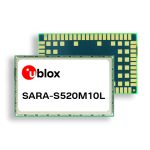Honeywell has successfully flight-tested new technologies designed to enable alternative navigation offerings, including its Embedded GPS Inertial Navigation System (EGI) supporting M-code, the new standard GPS signal used by militaries around the world. These tests, which involved equipping a Honeywell test aircraft with alternative navigation technologies, demonstrate a major milestone in providing continued navigation solutions in GPS-denied environments. This was also the first time an airborne M-code receiver was flown on an aircraft in an EGI, demonstrating the effectiveness of M-code in a live, airborne environment.
“The issues of GPS-denied environments or GPS jamming are felt by every facet of the aerospace industry, but they’re particularly concerning for military operations,” said Matt Picchetti, vice president and general manager, Navigation & Sensors, Honeywell Aerospace. “We’re working very hard to build an alternative navigation ecosystem and very excited to add our third-generation M-code solution to our extensive product portfolio.”
Third-generation M-code is the latest advancement in military GPS technology designed to enable operations in challenging environments with a more robust and resilient navigation solution. Honeywell will provide its third-generation M-code EGI, available now for early integration, to various Department of Defense and international customers this year.
Honeywell has been developing multiple alternative navigation technologies to add resilience to GPS and enable continuous, safer and more reliable navigation in the event GPS signals become unavailable. M-code is one such technology, designed to enhance the resilience of the military’s GPS capability and is used in Honeywell’s EGI. M-code, along with other alternative navigation offerings, will facilitate safer and more resilient navigation for military air and land vehicles.
To date, Honeywell has shipped more than 60,000 EGI products to customers across the globe to be used in a variety of applications in the air, on the ground and at sea.





